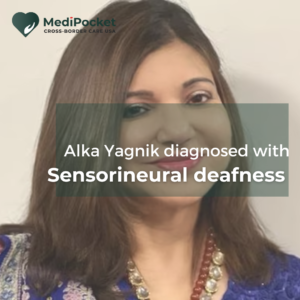Scleroderma, commonly known as systemic sclerosis, is a rare autoimmune illness affecting the body’s connective tissue. It is a chronic disorder that can cause skin and connective tissue thickening and hardness, as well as harm to internal organs such as the lungs, heart, and kidneys. The term “scleroderma” is derived from the Greek words “sclero” (hard) and “derma” (skin).
This disease is a complicated illness that affects individuals differently. Scleroderma is classified into two types: localised and systemic. Localised scleroderma just affects the skin, whereas systemic scleroderma affects the skin as well as internal organs. Depending on the degree and severity of skin involvement, systemic scleroderma can be characterised as restricted or diffuse.
Scleroderma’s specific aetiology is unknown, although it is thought to be an autoimmune illness in which the body’s immune system destroys healthy tissues. Scleroderma tends to run in families, thus genetics may play a part in its development.
Types of scleroderma
Scleroderma is classified into two types: localised scleroderma and systemic scleroderma.
Localised scleroderma
This is the milder type of scleroderma that just affects the skin. It is further subdivided into two types:
Morphea: Thickened, discoloured areas of skin that might be round or linear in form. Morphea is most commonly seen in the trunk, although it can also affect the arms, legs, and face.
Linear scleroderma: A single line or band of thickened, rigid skin running down an arm or leg. Linear scleroderma can also affect the forehead or scalp, resulting in hair loss.
Localised scleroderma usually does not involve the internal organs and has a better prognosis than systemic scleroderma.
Systemic scleroderma
Systemic scleroderma is the most severe form of scleroderma, affecting both the skin and internal organs. It is further subdivided into two types:
CREST syndrome (previously known as limited systemic sclerosis): The skin on the fingers, hands, and face thickens, as does Raynaud’s phenomenon, a disorder in which the fingers and toes become white or blue in reaction to cold or stress. Additional symptoms may include swallowing difficulties, heartburn, and lung issues. Calcinosis, Raynaud’s phenomenon, esophageal dysmotility, sclerodactyly, and telangiectasia are all symptoms of CREST.
Diffuse systemic sclerosis: This condition is distinguished by broad skin involvement that can affect vast sections of the body, including the trunk and limbs.
Symptoms
Scleroderma is a complicated condition that affects everyone differently, however the following are some frequent symptoms:
- Skin changes: Skin thickening and hardness, most notably on the fingers and hands, but also on the face, neck, and other regions of the body. The skin may also seem glossy or tight, and it may be waxy.
- Raynaud’s phenomenon: Cold sensitivity and color changes in the fingers and toes as a result of cold temperatures or stress.
- Joint pain and stiffness: Joint pain and stiffness, especially in the hands, wrists, and knees.
- Digestive problems: Digestive issues include swallowing difficulties, heartburn, bloating, and other gastrointestinal symptoms.
- Shortage of breath: Breathing difficulties and weariness as a result of lung injury.
- Fatigue: The sensation of being tired and lacking energy, especially after rest.
- Muscle weakness: Muscular weakness, notably in the arms and legs.
- Kidney problems: Kidney difficulties include high blood pressure and renal damage, which in extreme situations can lead to kidney failure.
Causes
Scleroderma’s actual aetiology is unknown, although it is thought to be an autoimmune illness in which the body’s immune system erroneously assaults healthy tissues. This causes the skin and internal organs to accumulate collagen and other connective tissue, resulting in the distinctive thickness and hardness of the tissues observed in scleroderma.
This condition tends to run in families, thus genetic factors may play a role in its development. In vulnerable people, environmental factors such as viral infections, exposure to particular chemicals, or injury may cause the immune system to attack healthy tissues. Scleroderma is more common in women and frequently develops during or after pregnancy, therefore hormonal considerations may be implicated.
Diagnosis
Scleroderma is diagnosed using a combination of medical history, physical examination, and different testing.
Medical history; A doctor will first obtain a full medical history, including symptoms and any past medical issues, before doing a physical examination. The doctor will then do a physical examination to search for evidence of skin thickness, joint stiffness, and other scleroderma symptoms.
Blood testing: Blood tests may be requested to look for antibodies linked with the illness, such as antinuclear antibodies (ANA) and scleroderma-specific antibodies including anti-centromere, anti-Scl70, and anti-RNA polymerase III.
Imaging tests: X-rays, computed tomography (CT), and magnetic resonance imaging (MRI) may be performed to assess internal organ involvement, such as lung and heart function.
Skin biopsy: To confirm the diagnosis of scleroderma, a tiny sample of skin from an afflicted region may be obtained and examined under a microscope.
Pulmonary function tests: These tests are used to assess lung function and diagnose lung involvement in scleroderma.
Gastrointestinal test: Endoscopy or a barium swallow may be performed to examine swallowing issues or acid reflux, which are frequent in scleroderma.
Rheumatologists are doctors that specialise in the diagnosis and treatment of scleroderma. A timely and correct diagnosis is critical for initiating appropriate therapy and avoiding problems.
Treatment
Scleroderma therapy is determined on the kind and severity of the illness, and may include a multidisciplinary approach involving rheumatologists, dermatologists, pulmonologists, and other experts.
Scleroderma presently has no cure, although therapy can help control symptoms, reduce disease development, and avoid complications. The therapy options include:
- Medications: Immunosuppressants, corticosteroids, and vasodilators are some of the medications that can be used to decrease inflammation, regulate symptoms, and increase blood flow to damaged organs.
- Physical therapy: Physical treatment may be beneficial in preserving joint flexibility and reducing muscle atrophy, particularly in situations with localized scleroderma.
- Occupational therapy: In situations with significant skin thickness, occupational therapy may assist improve everyday functioning and lessen handicap.
- Surgery: In extreme cases of skin tightening, joint contractures, or gastrointestinal problems, surgery may be indicated.
- Pulmonary rehabilitation: In situations with lung involvement, pulmonary rehabilitation may be beneficial in improving lung function.
- Trigger avoidance: Patients may be recommended to avoid specific triggers, such as smoking, low temperatures, and exposure to silica or other toxins, which can aggravate symptoms.
- Psychological assistance: Patients may require psychological assistance and counseling to cope with the disease’s emotional and social consequences.
The preceding article explains how a disorder might affect our skin, connective tissue, and internal organs. This uncommon condition is rarely discussed, and individuals are ignorant of the symptoms, which might lead to further issues in the future. As a result, it is suggested that anybody who notices any indications of scleroderma speak with an expert.
Consulting with a professional in the United States is always the best choice. The reason for this is due of their years of expertise and vast knowledge. Not to mention the hospitals and technology available in the United States. That is why MediPocket World provides critical care and second opinions from the United States to the Indian patients. We aim to connect Indian patients with the top experts from the world’s leading hospitals like mayo clinic, cleveland clinic, MD Anderson cancer centre etc.subscribe and get connected with the American board certified doctor now!!













